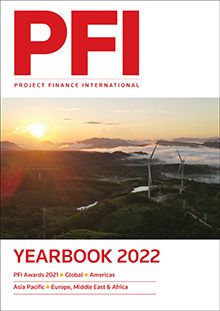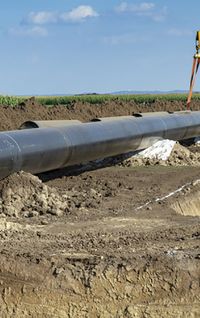Welcome to the 2022 Refinitiv Project Finance International (PFI) Yearbook. The Yearbook is our annual publication in which we look at the events of 2021 through case studies and the PFI Awards, and look forward into 2022 with a range of themed articles and profiles in the Global section of the book.
By now we all would have hoped the Covid 19 pandemic would be in the rear-view mirror but, perhaps not surprisingly, the virus lingers and mutates. One last push, one final variant and we should be free of restrictions into 2022, hopefully. But massive damage has already been done to monetary policy and the global supply chain. While this time last year we were dusting ourselves down in the projects world, looking forward to 2021, we did not realise the inflationary impact of Covid. Not only have we been printing too much money to pay to mitigate the impact of Covid but global supply chain shortages have hit home.
This year we have had very liquid debt capital markets. But can this last into 2022 with the prospect of rising interest rates? The demand for real assets remains high from the investment community, particularly anything green, but we are probably entering new territory in relation to inflation, interest rates and liquidity. That said, world governments are now huge borrowers, so maybe the correction will be mute if they can home in on the confidence-in-sovereign debt line.
Liquidity and the cost of debt is clearly an important factor in determining project economics but construction costs are just as vital – more so if they suddenly leap up. And the prices of solar panels and wind turbines have leapt up in the latter half of the year. This has already impacted some developers, particularly in the emerging markets. Solar projects have been cancelled as the economics suddenly don't look too great or they have pushed down the line into the new year in the hope that EPC prices will come back. In offshore wind, bidders for the projects still seem to be very aggressive – take the recent Danish Thor auction for example – but their underlying construction costs are rising sharply. And we have seen this year some construction fall-outs on projects in Taiwan and the UK.
What then for 2022? Maybe the developers of large-scale projects are confident enough in their ability to keep costs down. It is difficult to see how, particularly if the cost issues do not subside. It is not just materials, steel etc, it is the whole supply chain that is under pressure, from transport costs to labour. Given the current environment, we have decided to start the Yearbook with two analysis pieces from Rystad Energy and Arup on the cost pressures in the solar and offshore wind sectors. Well worth a read.
We do not want to dwell too long on the negative, particularly at year-end. As most articles make clear, both the solar and offshore wind sectors are in for a bumper era as the energy transition takes hold. The Yearbook considers the positive, looking at the new entrepreneurs, carbon capture, the new buzz sector of hydrogen, and indeed the new buzz surrounding an old sector, infrastructure investors pushing into the LNG business. For while this has been the year of Cop26 and ESG, I sense there is a growing realisation that it is an energy transition. We need gas. One of the real achievements of COP26 was the focus on stopping methane emissions from gas. Reasons to be cheerful.
Rod Morrison, Editor, PFI
To see the digital version of this report, please click here
To purchase printed copies or a PDF of this report, please email gloria.balbastro@lseg.com
















